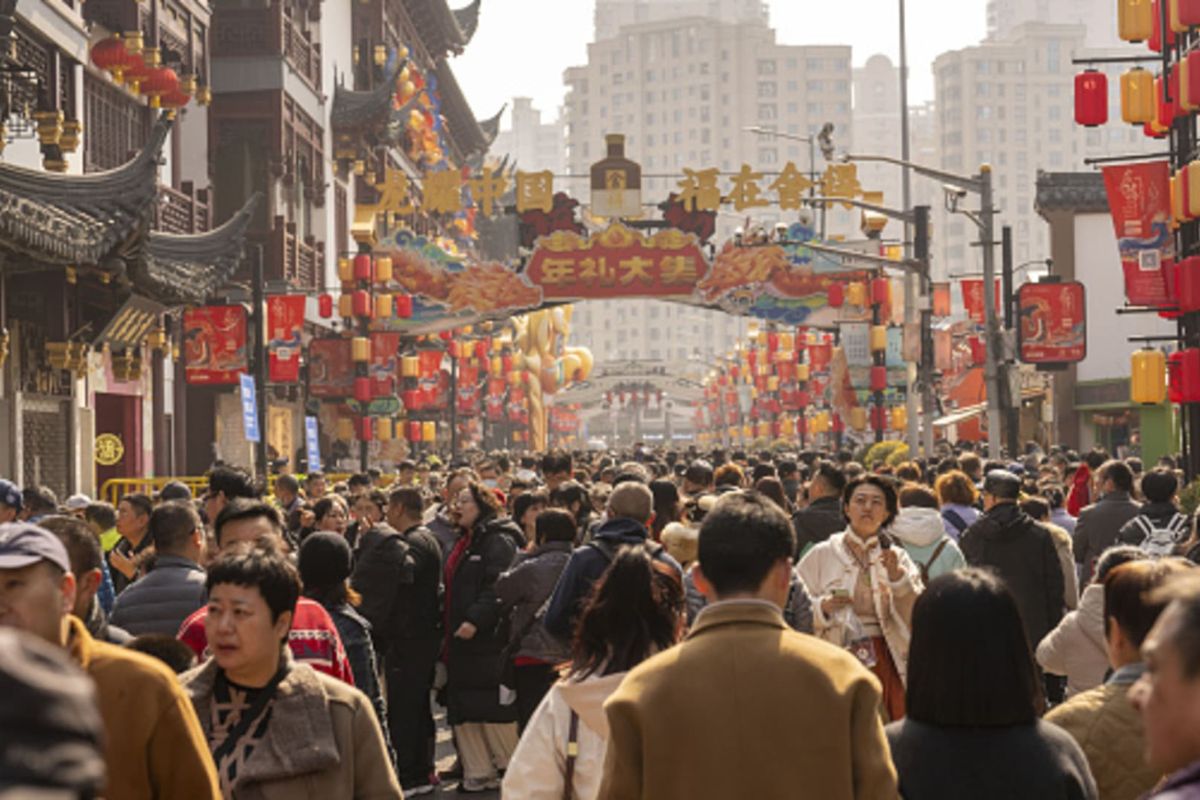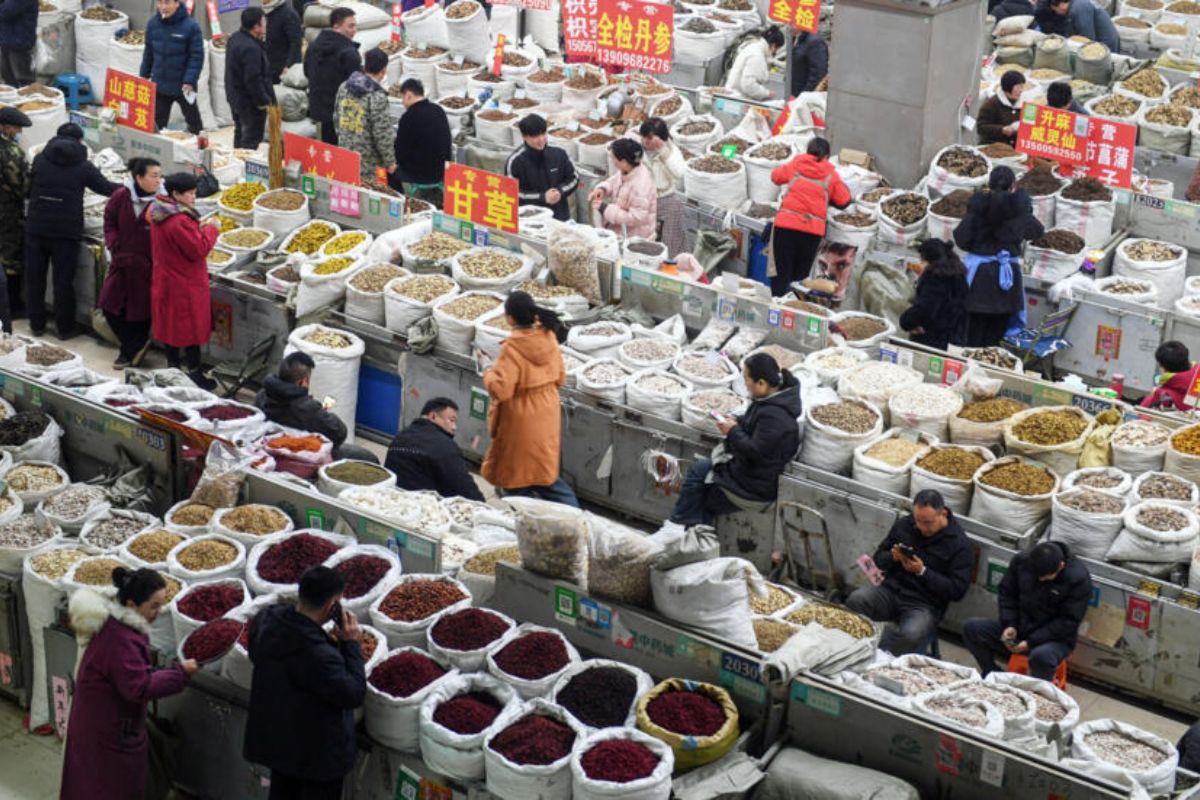China’s Prices Surge: China’s prices are on the rise, and it’s not just due to the Lunar New Year festivities. While the season typically sees a boost in economic activity, recent data shows a surge in consumer prices, sparking concerns and speculation about the implications for China’s economy.
As prices soar, experts are closely monitoring the impact on inflation rates and the broader financial landscape. But what could this mean for the future of China’s economic growth and stability?
Find out more about the latest developments in this intriguing trend.
China’s Consumer Prices Rise Amid Lunar New Year Spending
China’s consumer prices surge amidst Lunar New Year spending frenzy, defying expectations and sparking economic optimism. The 0.7% year-on-year increase in February has caught many off guard, as the festive season led to a surge in spending on essential items such as pork and fresh vegetables, along with a spike in travel expenditures.
This unexpected rise marks a significant turnaround from the previous six months of decline, hinting at a potential economic upturn in China. However, caution is advised as analysts warn of underlying weaknesses in domestic demand and the property market that could dampen long-term growth prospects.
Could this be the start of a new trend, or will the celebrations merely mask deeper issues within the Chinese economy? Stay tuned as we deeper into the implications of this surprising price surge and its impact on the nation’s economic landscape.
Also Read: China’s Consumer Prices Experience Historic Plunge, Igniting Deflation Fears
Producer Prices Decline Again, Posing Deflationary Risks
Producer Prices Plunge, Signaling Deflationary Peril Ahead
China’s producer prices are in freefall, plunging a staggering 2.7% year-on-year in February, surpassing all expectations. This alarming descent underscores a looming threat of deflation, propelled by a marked downturn in demand. The relentless decline in the Producer Price Index (PPI) for over 1.5 years paints a grim picture of the economic landscape, besieged by myriad challenges.
Here are five reasons why this plunge spells disaster:
- Weak International Trade: Global uncertainties are exacerbating China’s economic woes.
- Declining Domestic Investment: A lack of local confidence is driving investments to a standstill.
- High Local Government Debt: Mounting debts are stifling growth and hindering recovery efforts.
- Sagging Demand: Consumer reluctance is casting a shadow over future economic prospects.
- Looming Deflation: The specter of deflation threatens to plunge China into a downward spiral of economic despair.
Buckle up, as China’s economic rollercoaster takes a dangerous nosedive into deflationary territory.
Policy Measures and Economic Outlook
Amidst turbulent economic waters, policymakers in China have unveiled strategic measures to navigate through looming deflationary threats and uncertain recovery prospects. Premier Li Qiang’s bold move to reduce banks’ reserve requirements signals a fierce determination to steer the economy towards stability.
However, with a modest growth target of around 5%, the road to post-COVID recovery seems fraught with challenges. The government’s optimistic 2024 inflation target of 3% contrasts sharply with UBS economists’ cautious outlook, warning of tepid growth in both Consumer Price Index (CPI) and Producer Price Index (PPI) inflation.
As if that weren’t enough, the looming specter of a deeper downturn in the property market threatens to plunge China’s economy into further deflationary woes. Will these policy measures be enough to avert disaster, or is China standing on the brink of a financial precipice?
Stay informed to master the complexities of China’s economic future.
News In Brief
China experiences an unexpected surge in consumer prices by 0.7% year-on-year in February, defying previous six months of decline, fueled by Lunar New Year spending on essentials and travel. While signaling potential economic upturn, analysts caution about underlying weaknesses in domestic demand and the property market. In contrast, China’s producer prices plummet by 2.7% year-on-year, posing deflationary risks for over 1.5 years.
This alarming trend is attributed to weak global trade, declining domestic investment, high local government debt, sagging demand, and the looming threat of deflation. Policymakers implement measures, including reducing banks’ reserve requirements, to navigate economic uncertainties, but challenges persist in achieving the 5% growth target. China’s economic future remains complex, with a delicate balance between recovery and potential risks.
Also Read:
Q1 What factors contributed to China becoming an economic power?
A Chinese economic development was primarily propelled by internal trade, privatization, and investment. Interestingly, foreign trade’s contribution to per capita GDP growth was found to be limited, while science and technology outweighed education in influencing economic advancement.
Q2 How China’s economy grew so fast?
A Over the past few decades, China has emerged as one of the world’s largest and most influential economies. Fueled by industrial production and manufacturing exports, China now boasts the largest GDP in terms of purchasing power parity (PPP) equivalence.
Q3 How did China rise to be an economic superpower?
A China’s remarkable economic growth is commonly attributed by economists to two primary factors: extensive capital investment, supported by substantial domestic savings and foreign investment, and rapid growth in productivity. These factors have seemingly progressed in tandem, contributing significantly to China’s economic advancement.



